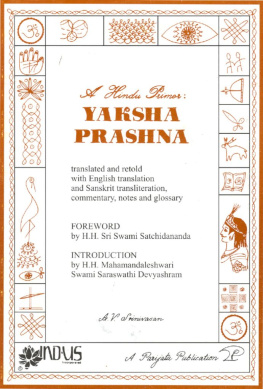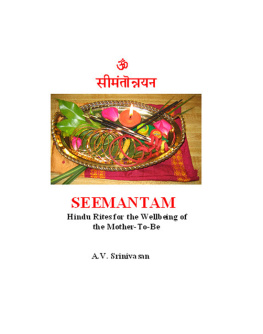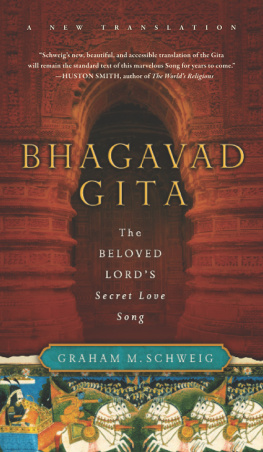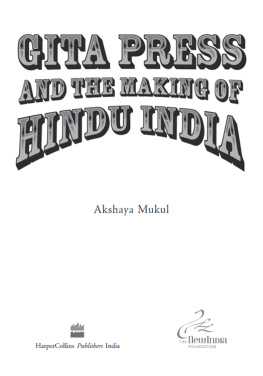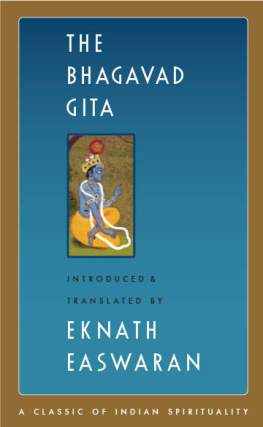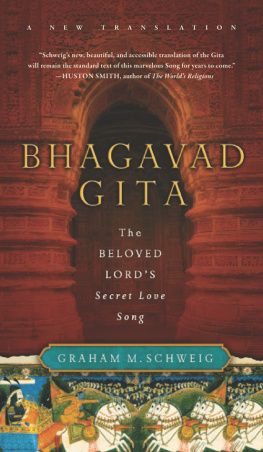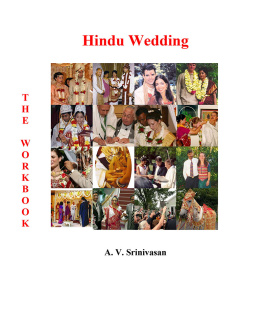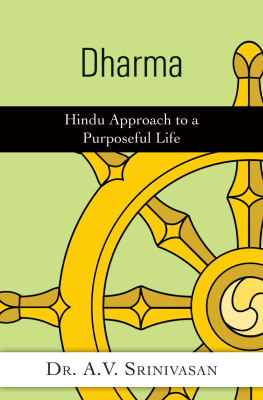A Hindu Primer:
YAKSHA
PRASHNA
translated and retold
with English translation,
commentary, notes and glossary
by
A. V. Srinivasan
FOREWORD
by Sanjay Gupta
INTRODUCTION
by H. H. Mahamandaleshwari
Swami Saraswathi Devyashram
Publications by the author:
Books
| Hinduism for Dummies; Wiley Publications, 2011 |
| Hindu Wedding: The Guide, White River Press, (2010) |
| The Vedic Wedding: Origins, Tradition & Practice (2006), Periplus Line LLC; *USA Book News 2007 Best Books Award Winner in the category of Eastern Religions; *2008 Next Generation Indie Book Awards Finalist in the Religion/Religious Non-Fiction category |
| Prayer Walk: Padayatra; published for and in behalf of The Connecticut Valley Hindu Temple Society, Periplus Line, LLC, 2005 |
| Sanskrit chant contribution to Knitting into the Mystery: A Guide to the Shawl Knitting Ministry, Morehouse Publishing, 2003 by Susan S. Jorgensen |
| Hindu Weddings, in Buddhists, Hindus, Sikhs in America, Oxford University Press, 2001 |
| Yaksha Prashna: A Hindu Primer (1984), Periplus Line LLC; 2nd edition 2002 |
Selected Recent Journal Articles
| Dharmo Rakshati Rakhitaha, in Bhavans Journal (published by the Bharatiya Vidya Bhavan), Vol. 51, No. 21, June 2005 |
| Friendship: The Vedic Basis of Hindu Wedding, in Marg, (Marg Foundation, MD), 2008 |
| Seeing Reality: The Darshanas, Special Feature, Tattvaloka, India, February, 2011 |
| Pantheism to Polytheism scheduled to appear in Prabuddha Bharata, India |
For a detailed list of papers/presentations please visit www.avsrinivasan.com
A Hindu Primer:
YAKSHA PRASHNA
by
Dr. A. V. Srinivasan
A Parijata Publication
To my mother
and
to Asha and Sandhya
and
all children of Indian heritage
growing up in North America
COPYRIGHT A. V. Srinivasan (English Text) 1984
All rights reserved
Published by Periplus Line LLC
E. Glastonbury, Connecticut, U. S. A.
ISBN 978-1-88704-303-8
2nd Edition, 2002
Illustrations by Kamla
Printed in India
FOREWORD
When we look at the intent of a book such as Yaksha Prashna, we are reminded that the author sought to make available the fundamental precepts of Hinduism to the children of Hindus now spread far and wide throughout the four corners of the Earth. Fearing their alienation from the root of their culture and the richness of their shared history, Dr. Srinivasan made accessible a set of guiding principles that few children would ever be graced with in their lifetimes as a result of their profound and unprecedented movement throughout the world. In some respects, his labor in their cause is no different than that of the generations of storytellers that came before, using little more than the transference of oral histories, later transcribed to paper, and then printed and distributed to the masses with the advent of the modern printing press.
Had the Internet as we know it existed during the first printing of Yaksha Prashna, now more than 25 years ago, I am sure that Dr. Srinivasan would have used it to disseminate the simple truths that he exposed in this beautiful book, and made its impact and reach even wider and greater than would otherwise have been possible. For us, the Internet is our Gutenberg, and has transformed how we communicate and share knowledge. What remains immutable, no matter the modality of communication, are the basic lessons of Hinduism that Dr. Srinivasan has assembled here for the uninitiated.
Yaksha Prashna was my first real exposure to Indian Philosophy, and though neither Dr. Srinivasan nor I could have fathomed its impact, it became the basis of my chosen course of study in university and will now serve the purpose of introducing Hinduism to my own children. I can think of no greater tribute to the goals he set forth for himself than to help make this text more widely available, to more children the world over, no matter their heritage or cultural tradition. Like Aesops Fables, or any number of the parables that parents have used throughout the ages to instruct their own children on the meaning of morality and justice, the stories encapsulated here within Yaksha Prashna hold their own special place in the canon of human thought and experience. I am both delighted and privileged to help bring it to a new generation of readers via a new medium, and continue to expand our understanding and engagement with one of the worlds great philosophies on our purpose and place in this universe.
Sanjay Gupta
15 September 2011
Beijing, China
INTRODUCTION
The Sanyasins of Sri Rajarajeshwari Peetham have spent the past seven years teaching our glorious spiritual heritage to Hindu children growing up in America. The needs of our Hindu children in the West are unique and it is not easy to find teaching tools, which are both effective and appealing to our children.
Dr. A. V. Srinivasans A Hindu Primer: Yaksha Prashna is an excellent tool for conveying to our children the essence of our rich spiritual heritage.
Children are attracted to the Yahksha Prashnathis magical interlude amidst the dynamic action of the Mahabharata. Teen-agers and little ones alike identify with the Pandava brothers, and easily follow them into their learning experiences. The same children who may be bored by a pundits discourse on Dharma, will be spell-bound by the intriguing questions and mind expanding answers exchanged between the Yaksha and Yudhishthira.
For those of us whose Blessing it is to teach our Hindu children growing up in the West, Dr. Srinivasan offers a simple yet profound Commentary for each question/answer. The commentary serves to stimulate thought-provoking discussions among our little ones, our teens, and within our own minds. Lest the discussion stray from an important point, there is a Summary which brings to the forefront the main point of each spiritual lesson.
In addition, Dr. Srinivasan has included the Sanskrit shlokas themselves, which enable advanced students to enjoy the original text and beckons to beginners to learn Sanskrit. The presence of original Sanskrit text always purifies and strengthens students.
A good teacher will recognize that children learn more quickly and deeply when they are able to participate in a learning experience. I recommend that when using Dr. Srinivasans Yaksha Prashna as a teaching tool, the teacher ask each child to attempt to answer the Yakshas question before Yudhisthiras answer is given. The children will quickly see the high level of thought from which Yudhisthira respondsand the children themselves will rise to that high level in order to participate in the class.
In addition, ask for the childrens own commentary and summary of the lessons to be learned. Just be sure to channel their responses into the right observationsand give the children all the credit for arriving at the right conclusions.
The Yaksha Prashna is very much an allegory for what Hindu parents and their children being raised in the West are undergoing at this time. Hindu families in the West are like the Pandavas undergoing rigorous years of exile in the forests. The difficulties and tests we experience in our daily lives are like encountering the Yaksha.
And yet, the Yaksha is none other than our Divine Father testing the strength and character of his son

